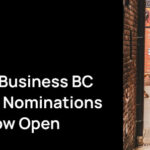Letter: We need patient centred care, province-wide
Dear Editor,
As I write this, patients are travelling long distances for consultations with specialists. Many of these journeys, for simple face to face meetings are made even though the required workup has been completed and the results forwarded.
BUT – What if you could visit a GP, have the referral and information forwarded to a specialist, get the diagnostic workup done, have a virtual (videoconference) consult with the specialist, obtain a diagnosis and develop a plan for treatment, all within one coordinated system. I am presuming a ‘hands on’ consult is not required and that the use of virtual communication is medically appropriate. From there, contact is made with the required service – physio, imaging, dietician, pharmacist, surgical booking – appointments are coordinated, the service provided, reports go to your specialist and GP, AND, the service provider can check back with the specialist for further direction or information as needed.
What if, incorporating this model using a province wide virtual communication network, were to result in our system moving closer to becoming Patient Centered Care.
Alas, with few exceptions, patients, their families or caregivers are required to make long, expensive, stressful and unnecessary trips for face to face consults when a virtual consult would provide the same outcome.
After 20 years of government ‘plans/promises’ to implement a province wide Electronic Medical Records and Virtual Health Communications system we have 6 (or more depending on how you count them) Health Authorities who have difficulty communicating with each other and a spotty dog’s breakfast of partial, single issue communication systems.
A history of local, single condition, time limited, pilot projects of patient/physician interaction, all successful. Upon completion of the pilots, a report is filed, there are mumblings around providing the service on a permanent basis and then … nothing.
The ability for patients to communicate virtually, when appropriate, with their health care provider would save days of negotiating difficult travel conditions, significant and unrecoverable costs for meals and hotels and time away from work.
There have been national and international experiments and studies extoling the advantages of virtual communication in health care. The vast majority point to the efficiencies and dollars saved. A Saskatchewan experiment even included ‘green’ benefits, with 6 million kilometers saved by the reduced need to travel.
Our government has this topic somewhere down the ‘to do’ list. The Ministry of Health Virtual Strategy Department is developing a framework, ‘Guideline for Patient Empowerment Through Virtual Care’ which is expected to be completed sometime this year. It will include recommendations around Use, Information Management, Physician Compensation, Technical Requirement, First Nations, Rural and Remote use, Managing and Governing and Monitoring.
My research has uncovered no mention of a province wide network which will support communication and the exchange of information between patients and all health care service providers.
Physicians and Patient Advocacy groups are seemingly interested in serving their own interests. There are many systems available and competition is fierce. Unless government follows through soon by endorsing a single system whereby a patient’s health care team can communicate with the patient and each other, we shall continue down the present path of money wasting chaos.
Time is running out for the patients and taxpayers of British Columbia to take control of the mishmash which currently exists and acquire a medical communications network that will serve all of us.
The production of a Virtual Care Strategy Policy by the MOH, which just repeats and reorganizes the work of other jurisdictions, is now seen to ‘be doing something’ to ‘be making a serious start’ when in fact it is a way of pretending to move forward. We are more than half way through a 4-year election cycle.
Unless there is concrete action to implement this service soon it will just drop off the agenda again because the costs never appear on a ministry budget line.
Sincerely,
Fanny Monk, Retired Health Care Worker.
Kamloops, B.C.
Appendix:
WHAT WE HAVE – After 20 years of promises:
· Six Regional Health Authorities, the First Nations Health Authority and the PHSA all with their supporting bureaucracies.
· Dozens of government plans, news releases and reports, all accompanied by self- congratulating glossy publications loaded with photos of smiling people.
· Very few public system teleconference sites, often placed where it is inconvenient for physicians to use, and consequently discourage most efforts to communicate with patients via videoconference.
· Private systems (many on the market) in Dr’s offices serving only the needs of a single office. Mounting evidence that physicians are uninterested in a province wide system of Electronic Medical Records or Video Conferencing serving patients and linking all health care providers.
· A number of pilot projects, mostly successful, restricted to a single health authority and serving only one or two specialties and no concrete plans to establish permanent service.
· Shamefully little communication between Health Authorities who have been allowed to choose computer systems unable to ‘speak’ to each other.
· Health Authorities, particularly Vancouver Coastal, ignorant of services offered outside the lower mainland.
· Patients – the taxpayers/you/me – travelling frequently for brief consults when a videoconference would be a convenient, cheap and medically appropriate substitute.
· No province wide Electronic Medical Records system – which has been promised since (the last century) 1999.
Editor’s Note: Frances Monk shared her thoughts on this issue last spring on a discussion forum at Healthydebate.ca. For readers who would like to know more about her, I obtained her permission to print what she posted there. It gives more details about her own frustrating history of dealing with the medical system and distant appointments.
Ms. Monk would like to hear from other affected member of the public, and has provided her e-mail address for that purpose: fannymonk@hotmail.com
Patient-centred care means better coordination of medical appointments
Date:May 1, 2019
Author: Frances Monk
I have lived in Kamloops, B.C., for 40 great years. I worked as an X-ray technician, mostly in the operating rooms, served my fellow workers as their union steward, and spent the rest of the time being a farm girl, competing with my horses in jumping and dressage events, enjoying life with my partner, Jim, and travelling a lot.
Twenty-two years ago I was diagnosed with breast cancer. Because Royal Inland Hospital in Kamloops is a mid-sized regional hospital, it offers most of the services needed for any diagnosis and some specialty treatments. However, for radiation therapy, I had to travel to Kelowna, a two-hour drive away. Before starting radiation therapy, I was scheduled for two appointments, a consult and a “mapping” of the region to be treated.
I never understood why all three of my initial visits (the third being the first round of radiation therapy) couldn’t be done in one trip, even if I subsequently needed to visit Kelowna for several consecutive days to receive the radiation therapy. To investigate this, I spoke with everyone at the cancer clinic from the chief oncologist to the booking staff. I compiled a report with several low-cost recommendations to streamline the system and sent copies to the cancer clinic, my provincial member of parliament and the Ministry of Health. My report appeared to generate lots of interest and everyone agreed that there was a problem, leaving me to think that some changes would be made.
Silly me—I came up against the same problem 20 years later.
In 2017, when I was diagnosed with atrial fibrillation, a disruption in the rhythm of the heart which is caused by chaotic electrical signals and can potentially lead to a stroke. All the diagnostic work was done in Kamloops, and I was referred to the atrial fibrillation clinic at St. Paul’s Hospital in Vancouver for a catheter ablation (cauterization of the areas in the heart causing the arrhythmia). In January 2018, I travelled down for what turned out to be a 15-minute chat with the cardiologist. The distance from Vancouver to Kamloops is 350 km; I flew down and bussed back. The trip cost me about $400, when a videoconference would have sufficed.
In April, I had a successful ablation in Vancouver.
In October, I was supposed to return to Vancouver for a checkup, but for unrelated health reasons I couldn’t travel so I requested that we do the appointment remotely. I assumed this would be by video, but when I discovered it wasn’t, I asked why not. Over the phone, the cardiologist told me the video equipment was in a different building, and it would have been too much of a “hassle” to go there. I guess it wouldn’t have been a hassle for me to travel to Vancouver again for a brief face-to-face at a cost of another $400!
After the successful ablation, I was asymptomatic. Even so, protocol demands that one remain on blood thinners, which was no longer possible for me. It was recommended that I be monitored by implanting a loop recorder. This is a small device that looks like a USB and is implanted under the skin near the heart, recording any time the heart exceeds pre-set parameters.
I was referred for the insertion of the device at St. Paul’s last fall.
I phoned the cardiac unit in Kelowna, and sure enough, they are able to implant loop recorders. I requested that my referral be sent there.
When the referral arrived in Kelowna, they called to let me know that the procedure could be done in Kamloops! This is a five-minute outpatient procedure! And yet, even after the recorder was implanted, I had calls from the Vancouver booking office to arrange an appointment at St. Paul’s.
Over the space of one year, I made one expensive and unnecessary journey and avoided at least two others. Not everyone is as lucky. But why? The atrial fibrillation clinic is in another region, yes, but it’s in the same province. The way the health authorities communicate with each other—or don’t—it’s as if they were in different countries.
Our health care system creates obstacles for patients when appointments are booked for tests, exams, consultations and procedures. For many, especially in remote areas, this causes anxiety, unnecessary expense, a waste of time and personal chaos.
I think this is a result of the rapid growth of the health care industry, the wide variety of services, regional fragmentation and swift technological change. I don’t doubt the good intentions of health care workers, but the lack of interest in scheduling flies in the face of “patient-centered care.” It is quite the opposite.
My goal is to change this part of the system. I want the mantra of patient-centered care to actually have some teeth. I want video and telephone consultations used where appropriate. I want health authorities to give greater consideration to the upheaval, cost and stress that unnecessary travel causes people.
Earlier this year, I sent a report to the Interior Health Authority in B.C. which was discussed at their board meeting in February. In mid-April I met with the same board. They get it! I have to be optimistic that remote consults will soon become the norm where appropriate.
I am not stopping there. I have spoken to many organizations. I have collected tales of frustration from people to share with authorities (personal information redacted). I interview specialists about changes they can accept around using video instead of face-to-face. I am networking with others around the province who share my goals. Government departments are hearing from me. It is a steep learning curve, but I am becoming a very squeaky wheel.
Fanny Monk is a retired X-ray technician and union activist, former competitive horsewoman and farm girl who rides a Can-Am Spyder for fun. Now her priority is working to change health care booking systems.


























Comments